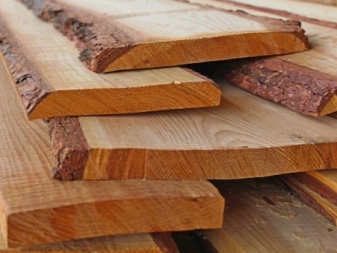How many boards 6 meters long are in one cube?

When buying one of the most popular building materials - boards - you cannot do without knowing how many of them are contained in a cubic meter. After all, boards are measured in cubic meters, and sellers usually indicate the price for a given unit of volume. A calculations for construction, for example, how much material is needed for wall cladding, building a bathhouse or repairing a fence, as a rule, are made in pieces.
In the article, we will consider how to quickly find out, using cubic tables, how many pieces of edged and unedged boards of different sizes with a standard length of 6 m are contained in a cubic meter, and how to calculate the necessary numbers yourself for lumber of non-standard dimensions, or if there is no table at hand.


How many edged boards are in 1 cube?
Edged board is a wood material, sawn from all sides along the faces and edges, it has a rectangular cross-section and straight, even edges. Thanks to its shape, it fits tightly into stacks with a minimum number of gaps. That's why the number of edged boards of a certain size in a cube is always standard - for example, boards 25x150x6000 will always be 44 units, and boards 50x150x6000 will always be 22. Thus, for edged boards of popular standard sizes, you can not do the same calculations every time, but use ready-made cubic tables, where the volume of the board and the number of its units per cubic meter (cubic meter) are indicated.
From the tables, it is easy to find out that the following quantity of boards with a standard length of 6 meters per cubic meter is contained.
20 mm thick (twenty):
- 100 mm wide - 83 pieces;
- 120 mm wide - 69 pieces;
- 150 mm wide - 55 pieces;
- 180 mm wide - 46 pieces;
- width 200 mm - 41 pieces;
- width 250 mm - 33 pieces.

25 millimeters thick (twenty-five):
- 100 mm wide - 66 pieces;
- 120 mm wide - 55 pieces;
- 150 mm wide - 44 pieces;
- 180 mm wide - 37 pieces;
- 200 mm wide - 33 pieces;
- width 250 mm - 26 pieces.
30 mm thick (thirty):
- 100 mm wide - 55 pieces;
- 120 mm wide - 46 pieces;
- 150 mm wide - 37 pieces;
- 180 mm wide - 30 pieces;
- width 200 mm - 27 pieces;
- width 250 mm - 22 pieces.
32 mm thick (thirty-two):
- 100 mm wide - 25 pieces;
- 120 mm wide - 43 pieces;
- 150 mm wide - 34 pieces;
- 180 mm wide - 28 pieces;
- width 200 mm - 26 pieces;
- width 250 mm - 20 pieces.

40 mm thick (forty):
- with a side of 100 mm - 41 pieces;
- with a side of 120 mm - 34 pieces;
- with a side of 150 mm - 27 pieces;
- with a side of 180 mm - 23 pieces;
- with a side of 200 mm - 20 pieces;
- with a side of 250 mm - 16 pieces.
50 millimeters thick (fifty):
- with a side of 100 mm - 33 pieces;
- with a side of 120 mm - 27 pieces;
- with a side of 150 mm - 22 pieces;
- with a side of 180 mm - 18 pieces;
- with a side of 200 mm - 16 pieces;
- with a side of 250 mm - 13 pieces.
It is important to note that for grooved types of material (lining, blockhouse, imitation of timber, flooring), which have protrusions and grooves for a stronger joint, calculations are carried out only for the working (visible) width, excluding spikes. Therefore, the same cubes are suitable for them as for edged boards.


Number of unedged boards
An unedged board is a material that has been sawn through two opposite faces, the edges remain uncut, retaining the bark (wane), have a beveled or rounded shape. The end part is trapezoidal... Therefore, such parts cannot be laid as tightly as rectangular materials, respectively, the number of unedged materials in a cube will always be less than that of edged ones.
But the main difference from edged boards is that their length and thickness are standardized, and the width is individual and depends on which part of the tree the part was cut from, what was the original diameter of the trunk. That's why unedged materials vary greatly in width. Consequently, the volume of each board in the batch is somewhat different. Namely, the number of units per cubic meter depends on this indicator. Therefore, it is more difficult to calculate the number of unedged materials in a cube than edged ones.
To find out how many pieces of unedged boards are contained in a cube, they usually calculate the average volume of the board of the required size, and based on this indicator, further calculations are made. For the result to be as accurate as possible, it is better to carry out your calculations for each batch of material. Typical cubic tables in the case of an unedged board give a less accurate result. Therefore, they are rarely composed.
Nevertheless, you can give approximate data for the most popular sizes of six-meter boards. In one cube there will be the following number:
- 25 mm thick - 34 (the average volume of one part is 0.029 m3);
- 40 mm thick - 20 (the average volume of one part is 0.050 m3);
- 45 mm thick - 14 (the average volume of one piece is 0.071 m3).


How to calculate?
Cubes are not available for all sizes of edged and unedged boards. Therefore, it is important to be able to do all the calculations yourself. To find out how many units of edged boards of the required dimensions are contained in a cubic meter, you need to make calculations.
- Calculate the volume of one part using the formula length * width * height. And you can also use the table GOST 5306-83, which shows the volume for the main standard sizes of sawn timber.
- The calculation is carried out according to the formula 1 m3 / V, where V is the volume of one board. Calculations are made in uniform units - meters, and it is important not to forget to translate all dimensions into them.
- The remainder of the division is discarded, the resulting integer value is the number of pieces per cubic meter.
For example, to calculate how many edged boards 25 × 150 × 6000 are in a cubic meter:
- calculate the volume of one part - 0.025 × 0.15 × 6 = 0.0225 m3;
- substitute the value in the formula 1 m3 / V - 1 / 0.0225 = 44.444;
- dropping the remainder, we get that there are 44 boards in the cube with dimensions 25 × 150 × 6000.
In the same way, you can calculate the number in a cube of not only a 6-meter edged board, but also any lumber with a rectangular or square section and even edges - timber, bars, lining, edged, polished or profiled boards of any size (2, 3, 4 meters and others).
Counting the number of unedged boards in a cube is a more difficult task, since their feature is a large spread in width, due to which they have a different volume. If you simply substitute the volume of one random board from a batch into the formula 1 m3 / V, the result will be very inaccurate. Therefore, before making calculations, you need to calculate the arithmetic average volume of the board in the party. In accordance with GOST, it can be determined in three ways.


The first one is piece by piece. The calculation is carried out in several stages.
- The dimensions of each board are measured without taking into account the bark (the measurement data is rounded to 10, and values up to 5 mm are not taken into account).
- The width is measured for each of the two layers in the center, then the arithmetic mean of the width is calculated. Moreover, if the moisture content of the material is more than 20%, GOST recommends making adjustments for shrinkage in width. To do this, you need to multiply the average width of a part from coniferous species by a factor of 0.96, from deciduous ones - by a factor of 0.95.
- The volume of each part is calculated using the formula length * average width * height.
- Calculate the arithmetic average volume of the board in the batch.
This is the most accurate, but also the most time consuming method. It is used for small batches of material.
The second way is selective. It is similar to the piece, only the dimensions are not measured for all the boards, but selectively of a certain number from the batch. How much material to take for the sample is determined in accordance with GOST 13-24-86. For example, for a batch where all materials are of the same length, the sample must be at least 3% and at least 60 units.
The third method is batch.
- Measure the dimensions of the package (package), which contains a batch of a certain number of boards.
- Calculate the volume of the package by the formula length * width * height.
- For accurate calculations, it must be borne in mind that, due to the beveled edges, the boards cannot be placed tightly, and there are gaps between them. To recalculate the measured (folded) volume of the package into the volume of a dense cube, you need to apply the correction factors that are given in GOST 13-24-86.
- To find out the volume of one board, you need to divide the resulting volume by the number of boards in the batch.
After the volume is determined by the piece, sample or batch method, it is substituted into the formula 1 m3 / V and the number of units of material in 1 m3 is calculated.
For example, if the average volume of the board is 0.029 kg / m3, then, substituting its formula, we get 34.483. We discard the remainder and find out that there are 34 such boards in a cubic meter.















The comment was sent successfully.